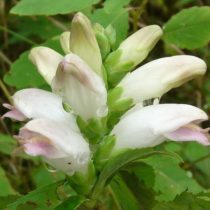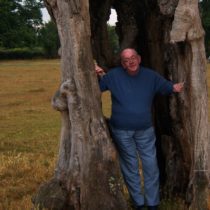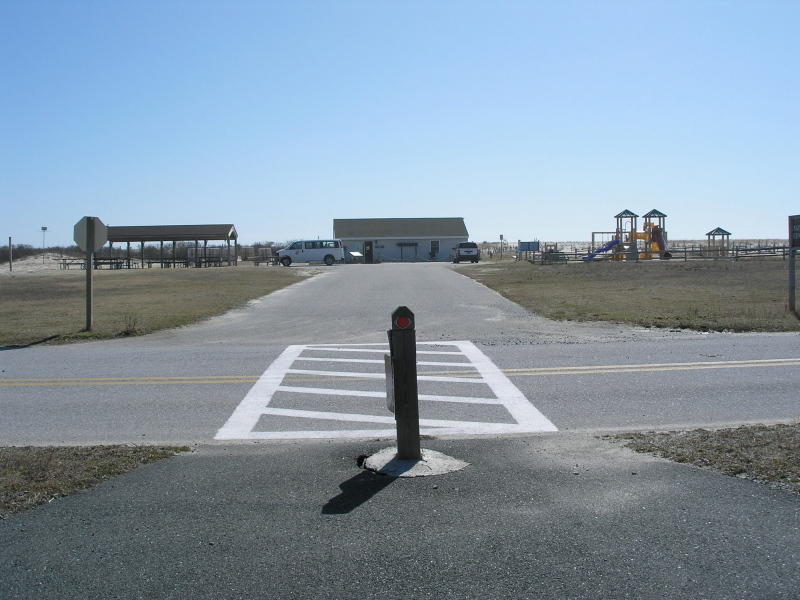Landscape Architecture for Landscape Architects › Forums › GENERAL DISCUSSION › Species selection and soil amendments for coastal tree planting
- This topic has 1 reply, 9 voices, and was last updated 13 years, 11 months ago by
 Jordan Lockman.
Jordan Lockman.
-
AuthorPosts
-
August 29, 2011 at 5:45 pm #160717
 Geoffrey CampbellParticipant
Geoffrey CampbellParticipantTo offset development impacts (in lieu of Stormwater management), a reviewer is requiring a certain number of trees ( or shrubs at a 3:1 ration) to be planted at a job for a nature center addition. This nature center is located on a barrier island in maryland, between the fore-dunes and backdunes of the beach system. The only other native vegetation in the area consists of grasses. As most of my work is done much further inland, my experience with coastal environments is limited, however I would like to give these trees the best shot at survival. Can anyone offer advice on species that are known to work well in a coastal (sandy, salty, windy, zone 6ish) environment. Also, would soil amendments be advised for this situation or would it create a false environment and be more detrimental in the long run? Any advice would be appreciated.
Thanks!
August 29, 2011 at 10:40 pm #160735 Jordan LockmanParticipant
Jordan LockmanParticipantIn situations like that I always ask nature what works? I look at what has worked in other places just like what you are dealing with. If there is nothing that works in nature in your location I would plant what is most likely to work. I am guessing that shrubs might be your answer, can you think of any first succession(pioneer) shrubs that you could plant and tolerates salt. These are the weeds that you would see along the beach. Around here I have some ideas but I grew up on an inland freshwater great lake in zone 3 and that would not be the best choice for your situation.
August 29, 2011 at 11:31 pm #160734 Andrew Garulay, RLAParticipant
Andrew Garulay, RLAParticipantI’m farther north than you. Not many trees are going to establish in a dune situation as it is constantly changing in terrain (wind driven shifting sands, by definition). The only tree that I see handle a dune at all is Pinus rigida.
There are several native shrubs that live in dunes and sandy oceanside areras similar to dunes without the movement. Myrica pensylvanica, Prunus maritima, Comptonia peregrina, Rosa carolina, and Rhus copillina (sp?) are some that I use. Amelanchier does pretty well as a small tree. Bigger native trees that grow close to dunes up here include Quercus velutina, Quercus alba, Quercus bicolor, and Fagus americana.
Rosa rugosa does fabulously, but it is not a native and may or may not be acceptable. Up here, it was a fovorite of some conservation commissions because it did so well. Now, native species are usually required in buffer zones to wetland resource areas.
I’m surprised that the local conservation commissions do not have lists of recommended species. Most of ours go by a list put out by the Cape Cod Cooperative extension. Some have compiled their own.
August 29, 2011 at 11:46 pm #160733 david maynesParticipant
david maynesParticipantNyssa sylvatica (black tupelo) is a wonderful tree that does well in sandy coastal soils. I also second the shrubs cited by Mr Garulay…both myrica and comptonia fix nitrogen too! Bonus
I would use caution with the rugosa rose…I believe they made the list of invasives in the northeast a couple years ago.
Best of luckAugust 30, 2011 at 12:57 am #160732 Andrew Garulay, RLAParticipant
Andrew Garulay, RLAParticipantNyssa is a great tree with knockout fall foliage. Likes to be near hydric soils. I’d be afraid to use it too high and dry, if that is an issue.
Chokecherry is pretty good for survivability, too. If it is moist, Sassafras does well.
Rugosa is a weird one because it has an aggressive nature on a dune and it is not native. It still makes the list of appropriate plants for some conservation restoration in some of our towns, although it gets “potentially invasive” next to it in parenthesis. It is less and less accepted.
This might be useful:
http://www.mass.gov/czm/coastal_landscaping/list.htm#coastalbeachplantlist
August 30, 2011 at 1:44 am #160731 Andrew Garulay, RLAParticipant
Andrew Garulay, RLAParticipantCape Cod Cooperative Extension has a nice list of plants appropriate for fresh water buffer zones and coastal buffer zones. This one is now used as the standard for most local town conservation commissions. It has recommended plant size and spacing as well.
Geoffrey, you should also keep in mind that the smaller sized plants tend to have a higher survival rate in sandy soils. Sometimes the commissions think you are trying to save money by going small, but it really makes a difference in helping them establish before they have to much dessication from too much foliage. Beach plum is a great example. They grow in sand, but you can’t plant a big one or it dies.
August 30, 2011 at 2:03 am #160730 david maynesParticipant
david maynesParticipantAgreed with the Nyssa…I didn’t read closely enough…’dunes’. Oops.
Sassafras is superb, but I have found it to be a bit finicky to establish.Smaller is better in most situations. A good rule of thumb I use for trees is a year of establishment for every inch of caliper. So many times I argue for the small tree, but everyone demands the instant ‘mature’ tree scale. It’s always dicey the first couple seasons.
Nice dialogue
August 30, 2011 at 8:30 pm #160729 Geoffrey CampbellParticipant
Geoffrey CampbellParticipantThanks a lot! Very useful, I’m going with pitch pine, sweet fern and bayberry. Nitrogen fixation sold me.
August 30, 2011 at 10:12 pm #160728Mark Sanford
Participanthuh buddy, its been awhile, i can’t say what exactly will work up there, but i can tell you what i have had success with down here.
hackberry, sweetgum, black cherry, black cypress, live oak, persimmon, box elder,
eastern red cedat, sweetbay magnolia, loblolly pine, american holly,. wax myrlte.
all of these are natives and pretty much will grow any where….
hope all is well!
August 31, 2011 at 3:16 am #160727 Andrew Garulay, RLAParticipant
Andrew Garulay, RLAParticipantEastern Red Cedar (Juniperus virginiana) is also very good in a near dune situation up here as well. Probably the best bet for a tree in this type of environment in my area.
August 31, 2011 at 10:48 am #160726 Rob HalpernParticipant
Rob HalpernParticipantStill, you need to get a complete understanding of the hydrology, of just how sandy the soil, how much salt spray, etc. to start considering plant choices. Start there and the plant list will suggest itself. And succeed.
August 31, 2011 at 7:15 pm #160725 Les BallardParticipant
Les BallardParticipantFind the oldest photographs you can of this and close/similar areas from archives and see what grew then. Check for what local tribes picked/ate/used. Consider replacing areas of dead sand, ie not yet converted to soil but not likely to have sand added now and consider upgrading them. Spent mushroom compost mixed with a top layer of fresh soil is good. Protect with a berm planted with grass, a ribbon of salt tolerant bushes and pioneer species followed by what you want in the harder soil area. Check that these defences and area generally will have a protected status (“nature centre” or not). My mind keeps telling me of the trees planted in grass to halt desertification in Kenya only to be burnt as fuel by the locals. Where this project is being realised I bet locals have wood burning stoves, lol.
What did grow should grow again but, especially, if you can grow trees from local seed. Local stock will be best (so establish a nursery from the start to plant out what you have grown approximately free), always but, allowing for climate change, include what might only self seed now 50 miles down the coast. or 100. If you use pines as suggested – and it might be nice to have ground hugging juniper and so on – have the water drain to sea or face acidification of the soil. There is nothing wrong with formal gardens and this is where resorts win out. If the area is supposed to look wild, there is still nothing wrong with, for example, whole swathes of heathers in ericacious soil or lavenders and mediterannean plants like rosemary and pinks/carnations/dianthus under lavateria cover. Whatever, your planting schedule should allow for improving soils and what will grow there in time, not to mention increasing the area as dunes grow and more land becomes available. Lavateria, for example, needs gardening to last maybe 15 years and as, presumably, you do not want a mangrove swamp or something going mad to exclude other planting, you have to plan and budget for this. Who will do the work and pay for it? Many nature parks have an army of volunteers, long-term unemployed, etc.
Stormwater management is often a misnomer. What people really mean is we have all block paved our front yards to accommodate extra cars and chopped the trees down upstream so let’s have a fake wetland and more trees to act as a sponge and prevent short term flooding. The real job is to work with what you have and what you are going to get, not fit in the number of living units a client wants and cope otherwise. Else we would all live in small homes next to the aforesaid mangrove swamp and have to pay to have a malaria control unit every few miles. Honestly, this disease is a real worry again especially in wetland areas in our lattitudes as is blue tongue disease in cattle and other things. The reality, of course, is that we must compromise and come through as the bright crew member who is otherwise so expendable in a Star Trek episode, winning through on behalf of humanity while others enjoy the benefits in lotus-eating
ignorance.
I do not know your flora and fauna and, save for the tips given, recommend finding some amateurs who do. They may have records going back 200 years and I think of the many wildlife, lepidoptera and other groups around, not just the university professor though there could be overlaps. Similarly, there should be another group further down the coast to compare changes since the end of the mini ice age and archeological departments of local authorities may also assist. Only with this research can you speak from a point of authority as to what you can re-establish wild, grow as a useful ornamental, introduce to the wild or use for specific purposes, eg sphagnum moss in a bog establishing a mini industry of filling hanging baskets or selling the dried moss. Certainly, you can plan for folk using what they can get to make money as surely as planting cork oaks to support a local bottling plant – to give a way-out example. All of this may be wasted, of course, if the clients have already settled on an information centre, toilets, car park and petting zoo for farm animals earning a crust from education authorities anxious to show kids where an egg comes from, etc. or an overflow pond in a further floodable depression with stormwater pipes leading through it. There no-one will care what it is greened with between floods and a bird hide may be all the facilities allowed for. Sorry, but it all happens so very often as those in charge realise they need to do something to show willing but, in fact, rising water levels do not promise that expenditure on real sea defences is worthwhile or affordable. Wetlands are, in effect, the new acquiescence to global warming even next door to nuclear facilities.
September 2, 2011 at 3:06 am #160724 Claudia ChalfaParticipant
Claudia ChalfaParticipantI know that down here in SC/zone 8, wax myrtles and live oaks would do pretty well in that environment. But I agree with the others who have suggested you see what is doing well already and add to it. Nature knows best.
September 2, 2011 at 11:13 am #160723 Andrew Garulay, RLAParticipant
Andrew Garulay, RLAParticipantIt definitely makes sense to get in tune with what is naturally occuring in the environments that the project is in. I still think you need to, as an LA, formulate a pallet to use in order to design a landscape that is designed to its intended use. The purpose is not to restore a natural environment, but to make the built environment more closely support the natural environment that it exists within. Form should still follow function and obviously parts of the project may function as natural restoration while others may not.
September 2, 2011 at 4:32 pm #160722 Geoffrey CampbellParticipant
Geoffrey CampbellParticipant Would love to utilize existing vegetation as a starting point. From this picture I can make out about one species that seems to be successful, grass. I wish we could have budgeted for a localized vegetation inventory, or even additional site visits. Unfortunately however, this picture + google earth are the extent of my resources.
Would love to utilize existing vegetation as a starting point. From this picture I can make out about one species that seems to be successful, grass. I wish we could have budgeted for a localized vegetation inventory, or even additional site visits. Unfortunately however, this picture + google earth are the extent of my resources. -
AuthorPosts
- You must be logged in to reply to this topic.


